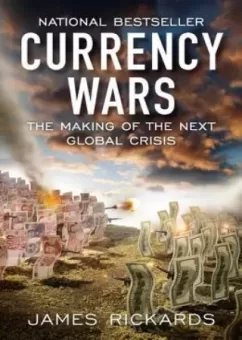CHAPTER 6
Currency War III (2010–)
“The purpose . . . is not to push the dollar down. This should not be regarded as some sort of chapter in a currency war.”
Janet Yellen, Vice Chair of the Federal Reserve, commenting on quantitative easing,
November 16, 2010
“Quantitative easing also works through exchange rates…. The Fed could engage in much more aggressive quantitative easing . . . to further lower . . . the dollar.”
Christina D. Romer, former Chair of the Council of Economic Advisers,
commenting on quantitative easing,
February 27, 2011
Three supercurrencies—the dollar, the euro and the yuan—issued by the three largest economies in the world—the United States, the European Union and the People’s Republic of China—are the superpowers in a new currency war, Currency War III, which began in 2010 as a consequence of the 2007 depression and whose dimensions and consequences are just now coming into focus.
No one denies the importance of other major currencies in the global financial system, including Japanese yen, UK pounds sterling, Swiss francs, and those of the remaining BRICs: Brazilian real, Russian ruble, Indian rupee and South African rand. These currencies derive their importance from the size of the economies that issue them and the volume of trade and financial transactions in which those countries engage. By these measures, the indigenous dollars issued by Australia, New Zealand, Canada, Singapore, Hong Kong and Taiwan, as well as the Norwegian krone, South Korean won and UAE dirham, all have pride of place. But the combined GDP of the United States, European Union and China—almost 60 percent of global GDP—creates a center of gravity to which all other economies and currencies are peripheral in some way.
Every war has its main fronts and its romantic and often bloody sideshows. World War II was the greatest and most expansive military conflict in history. The U.S. perspective on World War II is neatly divided into Europe and the Pacific, while a Japanese perspective would encompass an imperial empire stretching from Burma to an overextended attack at Pearl Harbor. The English, it seems, fought everywhere at once.
So it is with currency wars. The main battle lines being drawn are a dollar- yuan theater across the Pacific, a dollar-euro theater across the Atlantic and a euro-yuan theater in the Eurasian landmass. These battles are real but the geographic designations are metaphorical. The fact is, currency wars are fought globally in all major financial centers at once, twenty-four hours per day, by bankers, traders, politicians and automated systems—and the fate of economies and their affected citizens hang in the balance.
Participation in currency wars today is no longer confined to the national issuers of currency and their central banks. Involvement extends to multilateral and global institutions such as the IMF, World Bank, Bank for International Settlements and United Nations, as well as private entities such as hedge funds, global corporations and private family offices of the superrich. Whether as speculators, hedgers or manipulators these private institutions have as much influence over the fate of currencies as the nations that issue them. To see that the battle lines are global, not neatly confined to nation-states, one need only consider the oft-told story of the hedge fund run by George Soros that “broke the Bank of England” in 1992 on a massive currency bet. Today there are many more hedge funds with many more trillions of dollars in leverage than Soros would have imagined twenty years ago.
Battles in the Pacific, Atlantic and Eurasian theaters of Currency War III have commenced with important sideshows playing out in Brazil, Russia, the Middle East and throughout Asia. CWIII will not be fought over the fate of the real or the ruble, however; it will be fought over the relative values of the euro, the dollar and the yuan, and this will affect the destinies of the countries that issue them as well as their trading partners.
The world is now entering its third currency war in less than one hundred years. Whether it ends tragically as in CWI or is managed to a soft landing as in CWII remains to be seen. What is clear is that—considering the growth since the 1980s of national economies, money printing and leverage through derivatives—this currency war will be truly global and fought on a more massive scale than ever. Currency War III will include both official and private players. This expansion in size, geography and participation exponentially increases the risk of collapse. Today the risk is not just of devaluation of one currency against another or a rise in the price of gold. Today the risk is the collapse of the monetary system itself—a loss of confidence in paper currencies and a massive flight to hard assets. Given these risks of catastrophic failure, Currency War III may be the last currency war—or, to paraphrase Woodrow Wilson, the war to end all currency wars.




